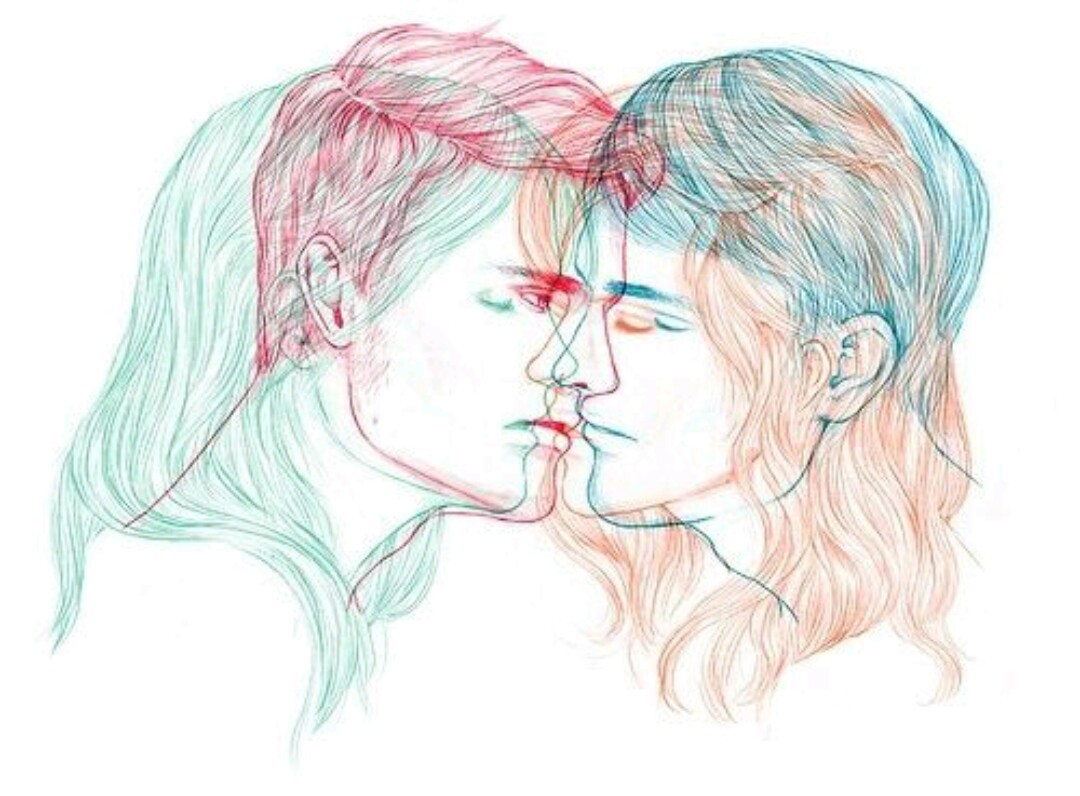We Exist: The ‘B’ In LGBT+ Stands For Bisexual, And Nothing Else
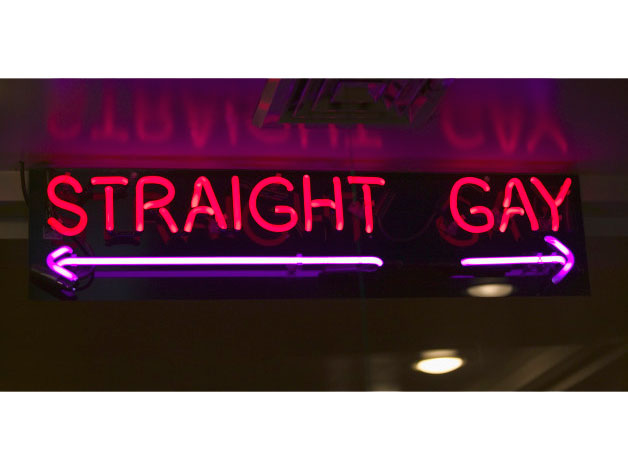 Thirsty for JUICE content? Quench your cravings on our Instagram, TikTok and WhatsApp
Thirsty for JUICE content? Quench your cravings on our Instagram, TikTok and WhatsApp
Earlier this year, in the time leading up to Pride Month, a new meme began to sweep across the vast lands of the Internet. As with most mistakes that major corporations make, Netflix’s newest error was being paraded on countless Facebook pages. The Babadook, a critically-acclaimed Australian horror movie about a twisted children’s book boogeyman, had been wrongly classified as an LGBT+ film on the streaming giant’s site – and boy, did people find it funny. Internet denizens from all over the world, both straight and queer, worked to turn the meme into an overnight sensation, and before long, footage of RuPaul’s Drag Race doctored to include the Babadook were surfacing in multitudes. Amidst this, a closed Facebook group rose prominently to attention – called ‘The B in LGBT stands for Babadook’, it became a popular tag in the comments section on LGBT+ memes, and lo and behold, the Babadook was immortalised in queer meme history.
While the group was undoubtedly created with only humorous purposes in mind, the idea that the B in LGBT stands for “Babadook” or another equally outlandish thing isn’t exactly off the mark when it comes to most of the world’s stance on bisexuality these days. Despite LGBT+ rights having come so far in the 21st century, both the queer community and their heterosexual allies often overlook the existence of bisexual people. At times, fellow members of the LGBT community even display active hostility towards them; marginalising their bisexual peers for flimsy reasons and false stereotypes. This phenomenon, known as biphobia or bisexual erasure, is still rampant in society today, and is more insidious than you may presume. The marginalisation of bisexuals both in larger society and within their own LGBT community – where one would hope to find the most support – is detrimental to not only bisexuals but also society as a whole, and unlike the Babadook, it is very, very real.
Cover image Murillo Chibana
A large cause of bisexual erasure today, especially in both the mainstream media and the heterosexual population, stems from pure cluelessness about what bisexuality actually is. (In case you yourself are unclear, bisexuality is defined by both the American Psychiatric Institute and GLAAD as “having emotional, romantic, or sexual attractions to both men and women”.) Kenji Yoshino, a professor of law at New York University and a scholar of LGBT+ rights in America, boils bisexual erasure down to three things – the first and foremost reason being the idea that bisexuals are simply “undecided”. There is a common societal stigma floating around today stating that bisexuality is a sexual orientation for single people, and their “real” orientation becomes solidified based on who they date. For example, this would come in the form of labelling a bisexual man as “gay after all” if he begins dating another man, and likewise with bisexual women being called lesbians, or with bisexual men and women dating partners of the opposite sex being referred to as heterosexual. This is perhaps the most common and popular misconception about bisexuals – it was even purported on Glee, in an episode that sees homosexual character Kurt Hummel dismiss bisexuality as “a term that gay guys in high school use when they wanna hold hands with girls and feel normal”.
The fact that this set of conclusions makes sense to a lot of people (and perhaps even you) shows that both the public and the mainstream media that purports these kinds of stigmatic impressions of bisexual people don’t actually know much about sexuality at all. Seeing sexuality as a binary between straight and gay is playing at a dangerous game – by neglecting to accept that sexuality is a spectrum, with heterosexuality and homosexuality as two polar ends with a vast range of different sexualities between them, one also neglects the large number of people for whom their identities may not be as simple.
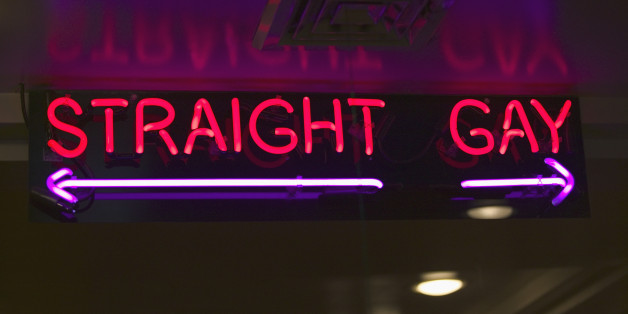
Besides, the idea of bisexuality is not a very hard one to grasp. Attraction to both sexes simply means that one would be open to a sexual or romantic partner being either male or female, as opposed to not feeling attracted to one sex at all. Claiming that bisexual people will somehow eventually have to choose between being “straight” or “gay” is akin to saying that zebras’ stripes are only temporary, and they will eventually turn all white, or all black. Such binary thinking is an overly simplistic and restrictive way of viewing the world. You can play more than one sport over the course of your lifetime; you can have more than one favourite food, and you can work more than one job. So why can’t someone be attracted to more than one sex?
Mind you, being attracted to more than one sex does not also mean that bisexuals would like to have more than one partner at the same time. Another popular biphobic misconception is that bisexuals are promiscuous – or even polygamous by nature – and will flirt from partner to partner without a shred of loyalty since the pool of suitors they can pick from is “twice the size”. This manifests in plenty of negative ways – bisexuals are often considered “loose” and untrustworthy, and tend to be shamed for crimes that they do not commit. A survey in France found that bisexual people were often seen as “hypersexual” beings, and that both heterosexual and homosexual people were averse to dating bisexuals as a result. Nearly two-thirds of women would not date bisexual men. Lewis Oakley, a British bisexual activist, even experienced both straight and gay people sending his girlfriend abuse over having a bisexual boyfriend – hateful messages asserting that she would never be enough for him, or that he would cheat, or even that he would give her HIV. According to Oakley, the idea that bisexuals are seen as filthy and without a shred of conscientiousness or fidelity is “a distressing reality” – and he’s right. Besides the obvious issues at hand with slut-shaming and other insults of its ilk, the generalisation that “bisexuality = promiscuity or polygamy” is not only harmful, but incredibly misconceived.
The idea that bisexuality equates to promiscuity uses a logically fallacious slippery-slope argument to imply that attraction to two sexes will also somehow result in a bisexual person keeping two or more romantic and sexual partners at once. RJ Aguiar, a bisexual YouTuber and blogger, lashed out about such assumptions by drawing a line between sexual orientation and sexual conduct – the former does not always equate to the latter. Back when homosexuality was criminalised in most countries, many homosexuals forced themselves to settle for and start families with spouses of the opposite sex, despite not actually being attracted to members of the opposite sex – the most recent example of this age-old tale can be found in Jay-Z’s track ‘Smile‘, which details his mother’s struggle with hiding her homosexuality and attempting to raise a family in order to avoid societal shame. In this vein, bisexual people can choose to settle monogamously with one partner, but still maintain an attraction to members of both sexes that is simply not acted on. Another way to think of this distinction is separating sexual attraction from social attraction. A monogamous bisexual person may be open to a sexual relationship with a man or a woman, but would be socially attracted to only one person – their partner, whom they feel a romantic and social connection to that goes above sexual attraction. Polygamy cannot, in any way, be equated with bisexuality – there are plenty of heterosexual people who believe in polygamy, and equally, plenty of monogamous bisexuals. A lack of representation as such by the mainstream media can be blamed for the public’s general ignorance of this fact – after years of being slighted by programmes such as Glee, the only way forward is to give bisexuality more positive coverage on the big and small screen, as well as to have more bisexual people speak out about their experiences.
The latter will be hard to find, though, especially due to their marginalisation within the LGBT+ community itself. “Bisexual[s] aren’t going to ask for help,” says Lewis Oakley, in another accurate reflection on the state of the community. “The majority of them are in hiding.” If you’re surprised, don’t be. While bisexual erasure is a problem amongst most of the heterosexual community and a few queer people, pure biphobia is rampant within the LGBT+ community, and its hostility knows no bounds. This year’s London Pride parade included one bisexual group in thousands of floats, even though banks, corporations, and a Supernatural fan group were allowed to march. The London Pride organisers claim that no bisexual groups applied on time and that applications were first come first served, but there have been rumours of foul play circulating ever since it emerged that applications to march were closed early, and the ‘first come first served’ policy has been slammed as a bad cover-up of institutional biphobia. Similarly, bisexual American author and blogger Zachary Zane recounted that last year’s Boston Pride had no bisexual block parties, although there were plenty of those catering to lesbians and gay men. “Gay Pride is an extension of the homonormativity that has taken control of LGBTQ+ people…” claims Zane. “Bisexuality, and all the other identities are not (or barely) represented. One or two floats in a parade of dozens isn’t enough.”
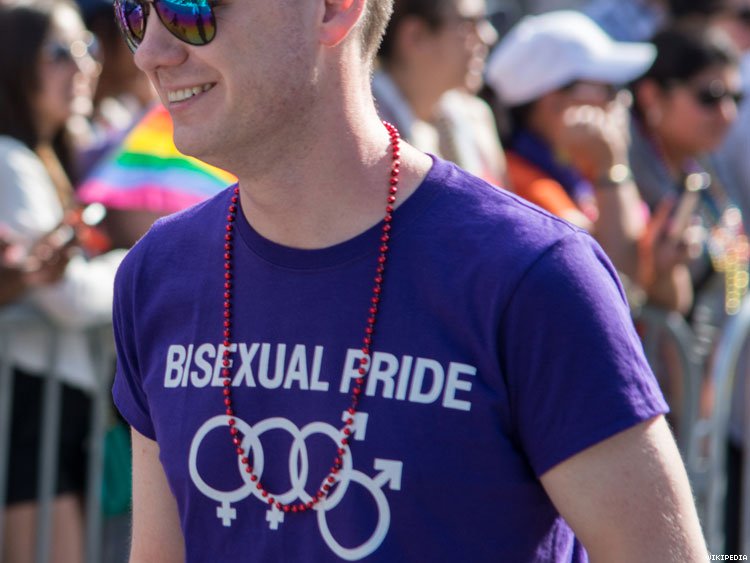
Even when they are allowed to attend Pride parades, a large number of bisexuals have reported abuse or being made to feel unwelcome at the events, mostly by perpetrators identifying as homosexual. “Pride is supposed to be a celebration, but it hasn’t been for me on many occasions,” reads a comic by a bisexual artist, which details the physical and verbal harassment that she has experienced at several Pride parades. The cause? Yet another misconception circulating amidst the LGBT+ community that identifying as bisexual is a ploy – allowing bisexuals to indulge their homosexual tendencies while remaining socially “acceptable” and free from homophobia by hanging on to heterosexual traits. “Breeders” and “switcheroos” are just some examples of the names that bisexuals have been called at Pride parades, which can be especially cutting for many bisexual women who struggle and fail to conceive with partners of the opposite sex. It is especially shocking that this sort of abuse comes from gay men and lesbians, who have themselves been on the receiving end of prejudicial hate for years on end. Unfortunately, like most other forms of prejudice, there is no easy solution to this kind of biphobia. All that can be done is to foster good relations between bisexuals and their other queer peers, and hope that a bond of shared experiences and tolerance will be enough to surmount this hurdle.
Another reason for the hostility towards bisexuals from the LGBT+ community is often rooted in insecurity – gay men and lesbians feeling offended when a relationship with a bisexual partner ends and the bisexual then dates someone of the opposite sex, or homosexual people worrying that they will never fully satisfy their bisexual partner (due to an attraction to both sexes). The latter issue is once again a failure to distinguish between sexual orientation, sexual conduct, and social attraction – the idea that an individual attracted to both sexes can only be fulfilled by polyamory with both sexes is incredibly narrow-minded, and perhaps reflects more on the person having those insecurities, instead of the partner whom they are projected on.
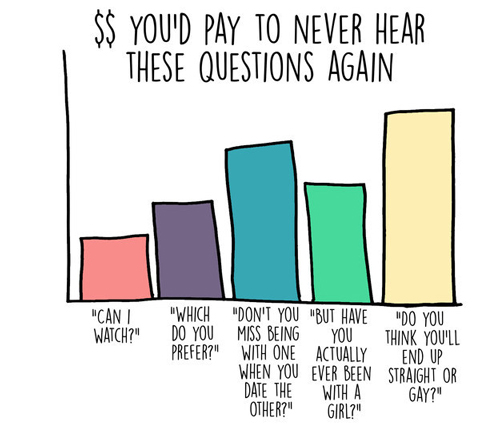
As for the former, it simply boils down to the sexism and ingrained homonormativity within the LGBT+ community. Homosexual partners who see their bisexual exes taking a partner of the opposite sex as “offensive” put the idea of gender and/or sex on a pedestal when it comes to the romantic and sexual relationships of their ex, when they themselves pursue relationships based on attraction, common interests, or both. Connecting to someone is normally the utmost priority in a budding relationship, yet bisexuals are policed by the LGBT+ community on the gender or sex of their partner – a distinction which clearly reeks of hypocrisy. In fact, consider this account from Libby Baxter-Williams, editor of the UK’s leading bisexual magazine, Biscuit. “I was in charge of a bi stall at Pride once when someone came up and told me she didn’t believe in bisexuality,” recalls Baxter-Williams. “She was wearing a t-shirt that said ‘Don’t tell me who I can love’.” The founder of the Pride parades themselves, American activist Brenda Howard, identified as bisexual. The irony of the entire situation speaks for itself, really.
Here are the hard-hitting facts, brought about thanks to the marginalisation of bisexuals by both the queer and straight communities. According to equal-eyes.org, an organisation documenting milestones in equality across the globe, in 2014 only 0.3% of grants aimed at LGBT issues went toward the bisexual community. Bisexual individuals have poorer mental health than gay men or lesbians, and are more likely to struggle with substance abuse, as well as be more vulnerable to medical ailments ranging from obesity to cancer, as found in three separate studies from the US, UK, and Australia. A report by the Equality Network in Scotland found that across the UK, 66% of bisexual people feel “only a little” or “not at all” part of an LGBT+ community, identifying biphobic comments and bisexual erasure within such communities as the factor limiting their full inclusion in such. Overwhelmed? Well, you should be. The long-standing suffering that bisexual people go through is only just beginning to come to light, as more and more courageous activists begin to speak out; tired of their oppression.
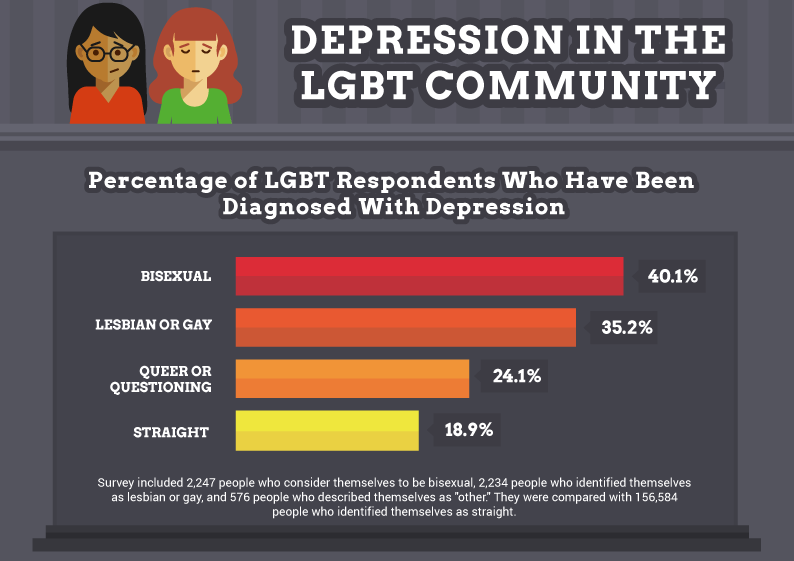
“But why do these statistics even matter?” some may ask. “The entirety of the LGBT+ community still faces a struggle for acceptance by the public today.” But it is only bisexuals who face a war against them on two fronts – not just from homophobic or bi-erasing heterosexuals, but from biphobic members of the LGBT+ community, too. Bisexuals have no real community pillar of support, unlike heterosexuals, and even gay men and lesbians. In the mainstream media they are often erased by both films and TV shows as well as their fanbases – take Blaine from Glee, who dated both a man and a woman (though separately, of course) and is still classified as gay in the eyes of both the show’s fans and creators. Or take the older example of Marcus Dent from Coronation Street, whose character spent years only dating men until he settled down with a woman, and the show’s creators laughably labelled him as “a gay man who fell in love with a woman” as opposed to a straight-up bisexual. And what’s worse is that bisexuals don’t even appear to exist in the eyes of the law as with the case of Ray Fuller, a bisexual Jamaican man seeking asylum in America, who had his claim rejected because the judges made the classic mistake of equating bisexuality to sexual conduct, and refusing to accept it as a legitimate sexual orientation. This comes in spite of the fact that Fuller had been shot at and had his face sliced with a knife for his sexuality, and serves as a clear sign that institutional biphobia is much more powerful than one would initially expect.
This is a sad state of affairs – bisexual erasure and biphobia only serve to create further ignorance and social stigmatisation of innocents across the world. It should be considered as serious a problem today as homophobia in general, and should not be taken lightly as “a silly squabble within the queer community”. Bisexual people do indeed exist, and they are under fire from all sides. In a time where everyone under the sun seems to be preaching values of tolerance and acceptance, perhaps it is finally time for us all to practice what we preach.
Sometimes diversity can seem a little forced. Read EJ’s thoughts on how the media tries to shoehorn LGBT+ roles and POC into their casting.


 Get Audio+
Get Audio+ Hot FM
Hot FM Kool 101
Kool 101 Eight FM
Eight FM Fly FM
Fly FM Molek FM
Molek FM